April, 2024
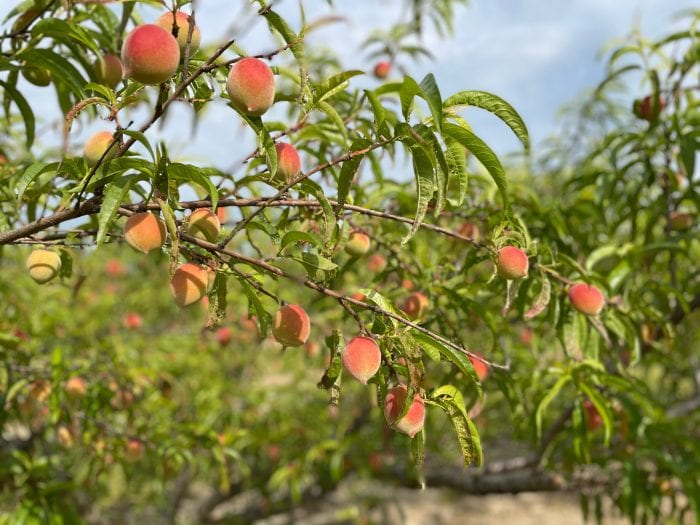
Pruning Muscadines & Stone Fruit
Are you wondering how to prune your muscadines? We have a video online by Dr. Arlie Powell that shows you just how to do that. Muscadine Pruning video.
A spray of Neem Oil and Captan fungicide should be used when small shoots are readily evident. This spray is to control aphids and fungal disease. Do not spray insecticides during the bloom period to protect pollinating insects.
While we are thinking about pruning Dr. Powell has an excellent video on pruning peach trees and stone fruit. Watch it here.
Container Planting
Summer annuals are arriving daily. Pansies will start getting very tall and floppy when the temperatures start to get high. It is time to rip them out and start planting your summer color. Million bells and petunias are a good choice for full sun. They come is many different colors and variations. With some having orange and yellow flowers and some have pink and yellow flowers as well as purple, yellow, white and red. Sunpatiens are a good choice for either sun or part shade. They also come is a multitude of different colors. They bloom all summer until frost. The trick to great blooms is giving them fertilizer about every 3 weeks.
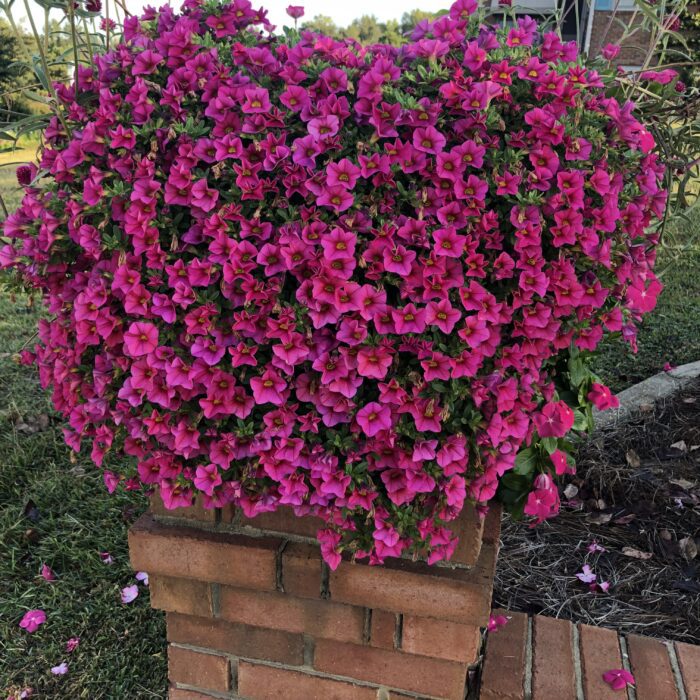
Bloom Sprays
Bloom sprays are used late February through early April. From first bloom until essentially all flowers have opened. One or two sprays are adequate. We use bloom sprays to control fungal and bacterial diseases. When applying copper be careful to use the recommended rates to avoid bloom damage. On peaches and plums apply 2 tablespoons per gallon of water at bud break. One tablespoon per gallon of water 2 weeks later. Then 1/2 tablespoon per gallon of water 2 weeks after the last spray through petal fall. Bloom sprays are for fungal problems such as brown rot may not be needed every year but are suggested if brown rot on fruit was severe the previous year. Suggested products are Hi-yield Captan, Hi Yield Vegetable, Flower, Fruit and Ornamental Fungicide (12.5% chlorothalonil )and Fruit Tree Vegetable, Ornamental Fungicide (29.6% chlorothalonil) You may also use Liquid Copper Fungicide and Liquid-Cop.
Cover Sprays
This spray begins at petal fall (nearly all flower petals have fallen.) and runs until 15 days before harvest. These sprays are used mainly to control insect and disease problems of the fruit. (especially plum curcullio which causes wormy fruit and brown rot which causes fruit rots). The first 2 to 3 sprays should be 7 to 10 days apart with later sprays up until near harvest 2 to 3 weeks apart. Suggested products are Hi Yield Captan Fungicide, Dusting/Wettable sulfur, Thiomyl. When using Thiomyl include Captan in the spray to reduce possible development of resistant strains of brown rot. For plum curculio and other insects, Mal-A Cide (50% malathion) or Bug Buster. The old fruit tree spray that contained Malathion and Captan is no longer available. However, the gardener can prepare the same spray by mixing per directions the Captan and malathion together.
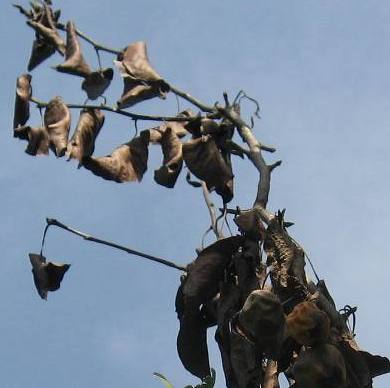
Fire Blight
Fire blight is the enemy of apple and pear trees. Other plants that are susceptible to fire blight are; Serviceberry, Flowering Quince, Cotoneaster, Hawthorn, Loquat, Pyracantha, Spirea, Flowering almond, Plum and Cherry.
It is caused by a bacteria that attacks the blossoms and moves up to the twigs and then the branches, turning the blossoms brown and shriveling and blackening the twigs and branches. In advanced cases discolored oozing patches form on the branches. Fire Blight is easily spread by rain splashes, birds and insects. Gardeners can also spread the disease on infected gardening tools. Disinfect your tools with a 10% clorox solution when trimming infected trees. Dispose of infected plant material by burning or discarding in the trash.
Copper sprays are excellent for bacterial problems such as fire blight. Fire blight spray which contains streptomycin may be used also. Streptomycin should be sprayed about every 10 days during bloom to be effective. As of this date there is not an organic spray for fire blight.
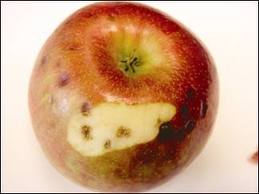
Corky Spots on Apples and Pears
Corky spots are areas of flesh from dime to quarter size just under the skin of the fruit on apples and often pears and quince. This condition which is caused by a boron deficiency and sometimes lack of calcium, results in fruits which are not very desirable for consumption. To produce fruits free of cork spots one of the better approaches is to apply calcium nitrate, super phosphate (if needed) and muriate of potash or sulfate of potash. Using calcium nitrate works well with pome fruits because it supplies both the nitrogen and calcium and doesn’t lower the soil pH which should be maintained at 6 to 7. Dr. Powell adds 2 to 3 tablespoons of calcium nitrate per gallon to all the sprays he applies to the apples and pears.
Vines
Are you looking for a mannerly vine that won’t take over everything in your yard? Give Coral Honeysuckle Lonicera Sempervirens try. It is a non-invasive plant . It stays right where you put it! It is native tp the United states and the hummingbirds love it as well as the bees and butterflies. Coral Honeysuckle is tolerant of our summer heat and requires about 6 or more hours of sunlight.
Pruning is one way to keep this plant healthy by getting rid of damaged and dead branches. You many prune throughout the year for appearance or cut it back to two feet in the fall or winter if the growth becomes unruly. Always prune after the last blooming period in the fall by cutting it around one-third, so you don’t remove new buds as it blooms on last year’s growth in the spring.
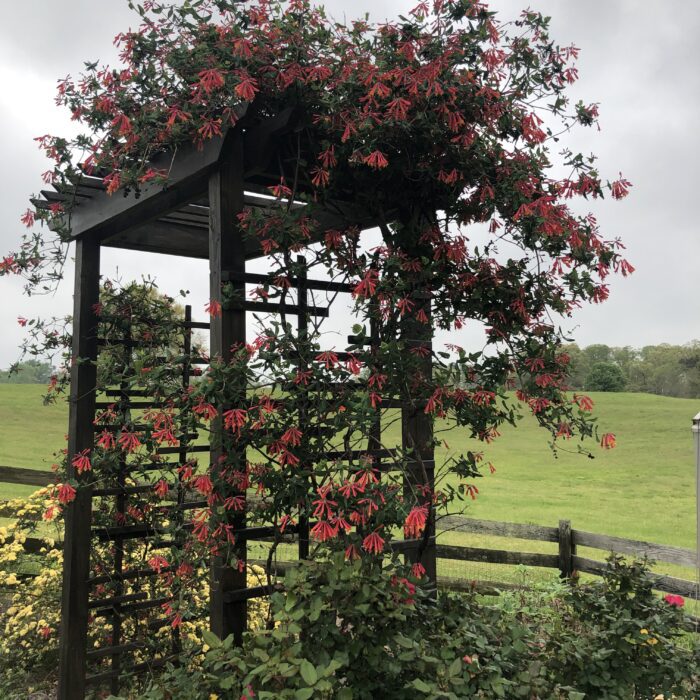
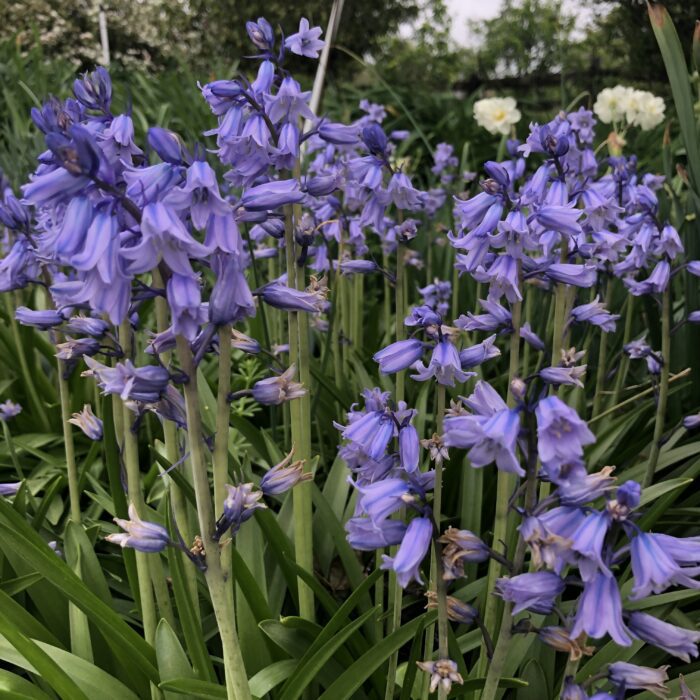
Fertilizing
Many of our spring bulbs such as Spanish bluebells, Clusiana tulips, daffodils and narcissus are finished blooming now. Leave the foliage, do not braid or cut it off, since it makes the food for the bulb which produces next years flowers. Divide if necessary and fertilize. You can fertilize your hydrangeas this month after the last frost. A safe bet would be April 20.
Use aluminum sulfate or camellia and azalea fertilizer on your French hydrangeas for blue blossoms and lime for pink ones. Azaleas, camellias, rhododendrons, laurel and gardenias also like this type of fertilizer
Roses
If you haven’t had the chance to prune back your repeat flowering roses, just wait until they have finished flowering and then prune them. They have already set their buds. When you are finished pruning add some fertilize. I use the Fertilome Rose food. It will take care of aphids and other insects that might be eating your roses.
Your spring only flowering roses can be pruned when they are finished flowering. Fertilize them also when you are done pruning.
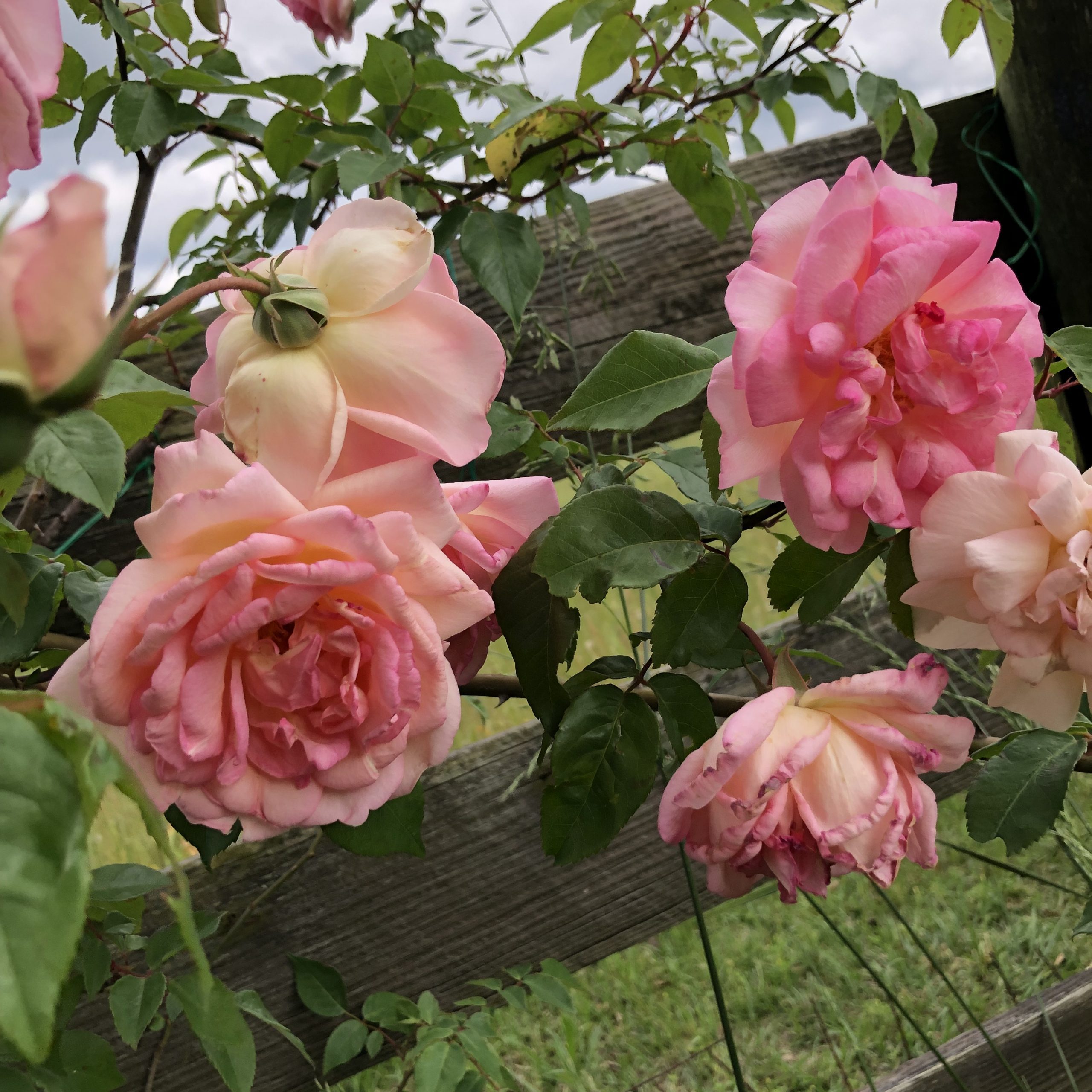
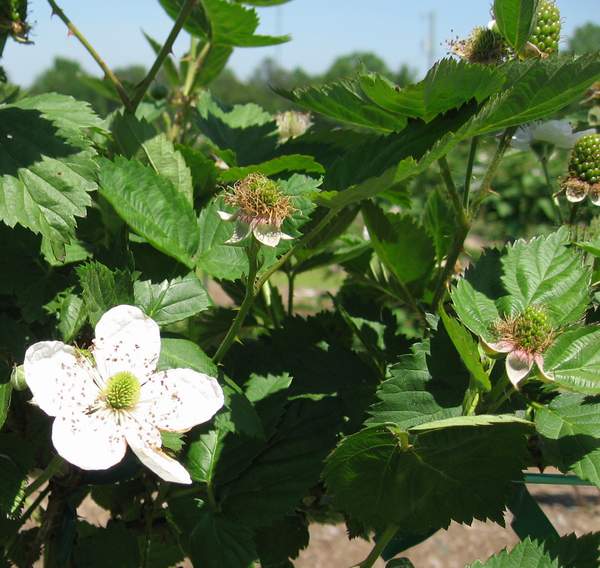
Blackberries
The blackberries are beginning to bloom. To control disease such as anthracnose, gray mold and to control the strawberry weevil, which cuts unopened fruit buds, we apply a spray of Neem Oil or spinosad. We usually do this just before flowering or when a few flowers are open. Should you choose to spray after flowering has begun, it will be necessary to spray very late in the afternoon or early evening while the bees have ceased pollinating. Malathion may be used in lieu of spinosad if needed.
Dr. Powell is also spraying the blackberries with F-Stop, myclobutanil is the active ingredient, for rust. This is also sprayed right before flowers open or when just a few have opened.
Vegetable Gardening
You don’t have to settle for just the few varieties of tomato plants that are being offered by other nurseries and big box stores. We are offering about 35 different varieties to choose from. There are heirlooms, yellow tomatoes, orange tomatoes, striped tomatoes and itty bitty ones that can be grown in a hanging basket. Surely there is one that has your name on it.
If you had blossom end rot on your tomatoes last year, a good way to take care of that problem this year is to add a hand full of pulverize lime to the hole when planting them. It should take care of that problem. Squash will also get blossom end rot and you can add lime to them when planting. If you forget to do that you can mix the lime with water and spray it on the plant.
There are also pepper, squash, cabbage and lettuce plants as well.
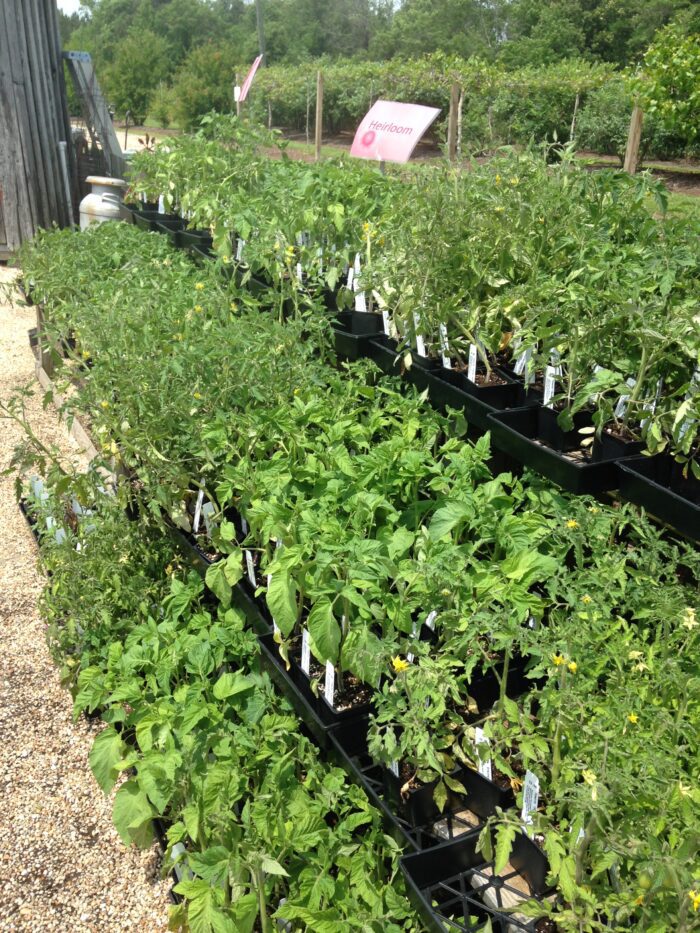
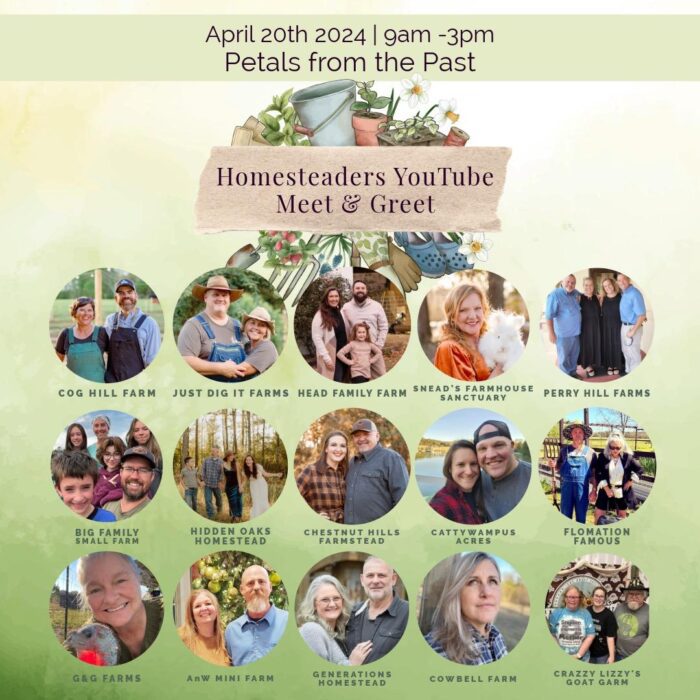
Join us on April 19 and 20 for our annual Antiques in the Garden. There will be crafts and antiques both days and plenty of food.
We will be hosting a Homesteaders Meet and Greet. They will be at the nursery from 9 to 3 on Saturday, April 20. If you plan to visit with the Youtubers we would like you to register so that we will have an idea of how many to expect. You may register here. Hope to see you!!
